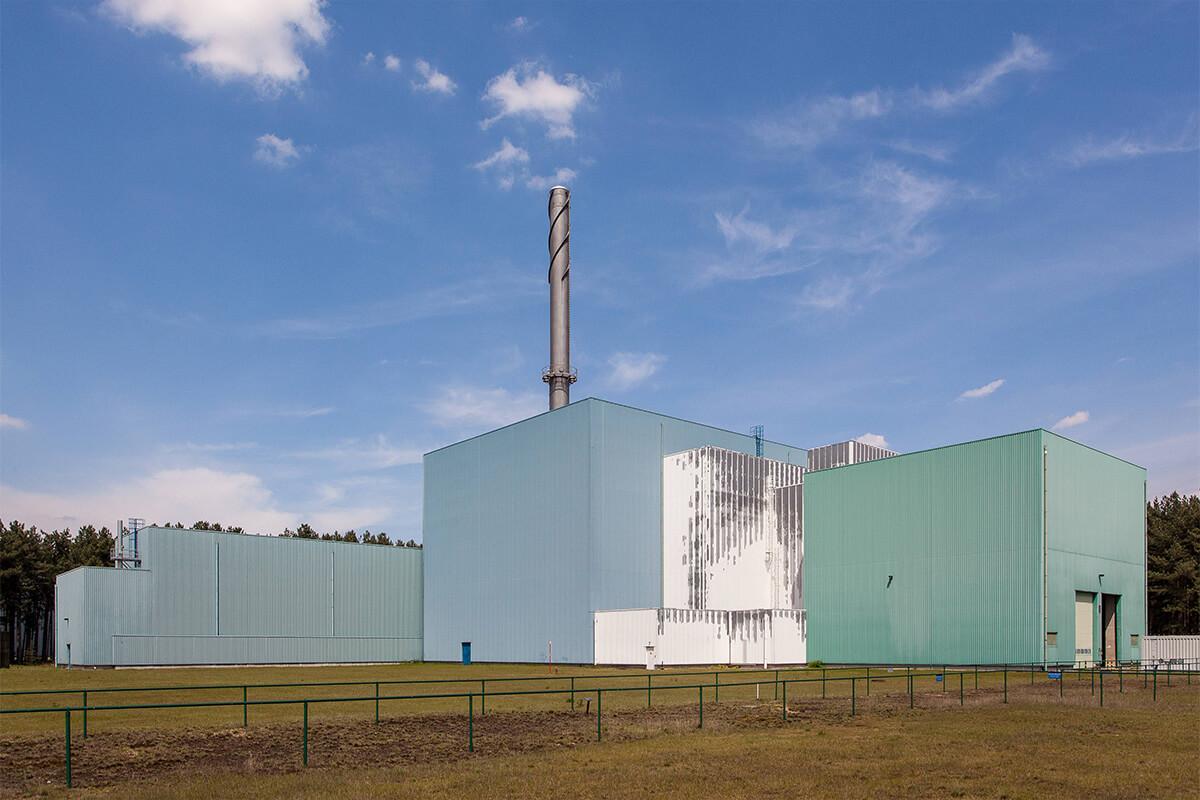Other options
Perpetual storage
Can radioactive waste not remain stored on the surface?
High-level and/or long-lived waste must be isolated from humans and the environment for up to hundreds of thousands of years. Surface storage buildings where radioactive waste is temporarily stored today do not guarantee safety in the long term and are therefore not a valid option for final disposal. These buildings have a limited life span and would need constant replacement. Besides, nobody knows how society or the environment will evolve: consider wars or climate change, for example.
On top of that, we would saddle each new generation with the management of waste, which is contrary to the principle of not passing on unnecessary burdens to future generations. Moreover, the perpetual storage of waste on the surface goes against all international safety standards (IAEA) and European directive Euratom 2011/70 which states that: “spent fuel and radioactive waste shall be safely managed, including in the long term with passive safety features”. This means that for long-term management, we are obliged to develop a passive system, where after a certain period of time, humans no longer need to do anything to ensure safety.

What does the FANC say about surface storage?
Nuclear authority FANC, in its opinion of 11 June 2020, also speaks out clearly on this: "Regardless of the type of installation, long-term storage entails a burden and a risk for future generations. In addition, it would require extensive maintenance activities and, eventually, waste reconditioning, restoration of installations and/or construction of new installations. These activities will lead to an increase in the volume of radioactive waste that will demand further storage capacity over time. Decisions on the opportunity and implementation of a possible disposal solution would thus also be transferred to future generations, without the latter having enjoyed the benefits of the technologies that generated this waste and without any guarantee that the costs involved could be covered by available financial resources."
Abandoned options
What options have been studied and abandoned?
Worldwide, various long-term management options have been studied, assessed, weighed and finally rejected. They go against international agreements and/or involve uncontrollable safety risks. For example, sea dumping, evacuation in an ice cap or launching in space are neither safe nor permitted.
Sea dumping (radioactive waste packages are dumped into the sea), seabed burial (packages with radioactive waste are inserted into the seabed sediments) and burial in an oceanic subduction zone (radioactive waste packages are placed on the descending tectonic plate of an oceanic subduction zone) are prohibited by international treaties.
Evacuation in an ice cap (the packages containing heat-emitting radioactive waste are placed at the top of an ice cap and gradually sink to the bottom as the ice melts due to the heat they emit) and launching waste into space (the conditioned radioactive waste is launched into space so that it enters orbit or even leaves the Earth's gravitational field) are also excluded and banned internationally.

Variants
Which variants are being studied today?
The international scientific consensus on deep disposal as the only safe and sustainable option for high-level and/or long-lived waste management was translated into European law. There are no real alternatives, i.e. solutions that meet the same requirements. Possible variants do exist, such as the possibility of joint deep disposal with other countries (a multinational shared disposal facility) and the option of disposing of waste using a deep borehole technique.
Can we share a disposal facility with other countries?
Although each country is responsible for managing its own radioactive waste, cooperation to develop and implement a joint disposal facility is not out of the question. So, in principle, our waste could be disposed of elsewhere or we could dispose of another country's waste along with our waste. A number of European member states are discussing shared disposal and have grouped together in the European Association for Multinational Radioactive Waste Solutions (ERDO). ONDRAF/NIRAS joined ERDO in 2023.

Are deep boreholes an alternative?
The option of deep boreholes is being explored in a number of countries; these are boreholes up to several kilometres deep. Research is not very advanced yet, especially when compared to the extensive knowledge and development base that exists for deep disposal in galleries. No country with nuclear power considers this an option for all its high-level and/or long-lived waste. This variant is only being envisaged for specific small quantities of radioactive waste that must be capable of irreversible disposal, i.e. without the possibility of retrieval.
New developments
Can new technologies such as transmutation play a role?
Technologies such as transmutation could convert some specific, long-lived radioactive substances in the waste into short-lived radioactive substances, but its industrial feasibility is yet to be demonstrated. Certain fission products - that are formed during the splitting of uranium (U) in a nuclear reactor and during transmutation - are not recyclable and are ultimately long-lived waste. This includes I-129 (with a half-life of 16 million years), Cs-135 (2.3 million years), Se-79 (356,000 years) or Tc-99 (214,000 years).
An underground disposal facility therefore remains necessary both for long-lived radioactive substances that are not eligible for transmutation and for long-lived residual products of transmutation. The technology itself will also produce long-lived waste that will require deep disposal. Also, transmutation cannot be applied to waste that has already been conditioned, such as vitrified waste.
Why is it important to take decisions now?
Like all other waste management organisations in the world, ONDRAF/NIRAS does not consider it ethically responsible, after 50 years of shared international research, to further delay decisions on and development of the disposal project while waiting for new hypothetical solutions. After all, it is up to the generations that have benefited from nuclear applications to ensure responsible and safe management of the waste produced. Otherwise, we will simply be passing on the problem and management burden to future generations. Belgium is taking a first step with the first royal decree.


